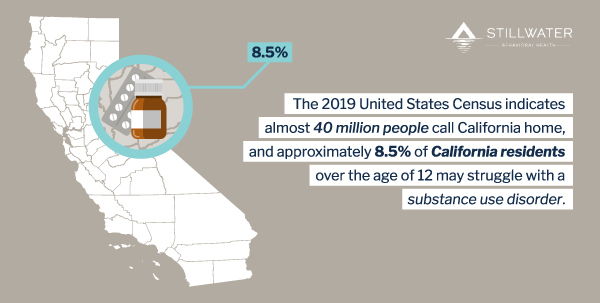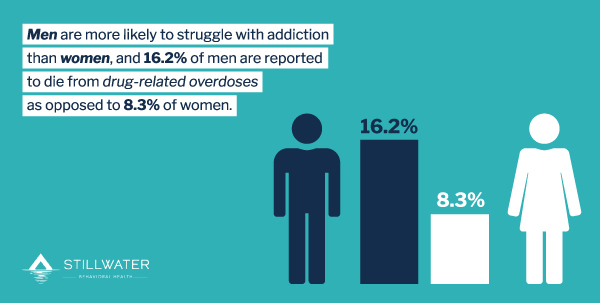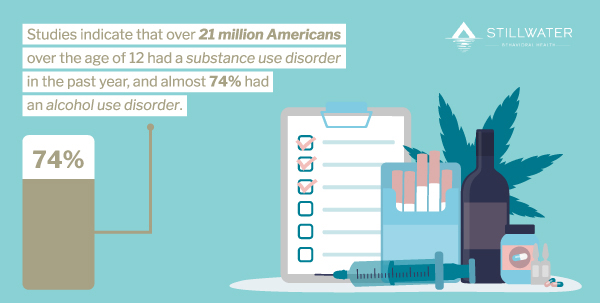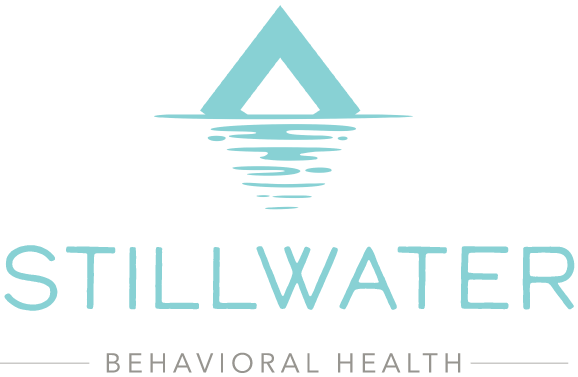California Alcohol and Drug Rehab Treatment Centers
With rising rates of substance use in California, rehab centers are the best treatment solutions.
California Drug Use Statistics
The 2017 National Survey on Drug Use and Health indicated more than twenty-one million Americans over the age of twelve had a substance use disorder in the past year. Of those, almost 74% had an alcohol use disorder. The same survey suggested nearly nine million Americans have a dual diagnosis condition, meaning they simultaneously struggle with a substance use disorder and a mental health disorder. 1
In 2017, nearly twenty-one million people needed treatment at a drug rehab center, yet fewer than 11% would ever receive the help they need.1 Addiction is a highly treatable disease, and lasting recovery is possible with help from a drug rehabilitation center in California. Unfortunately, like many other states, California struggles with high drug and alcohol addiction rates.
Questions about addiction?
Call Us Now: 1-866-232-9103
Your call is confidential with no obligation required to speak with us.
The Impact of Drug Abuse in California
A Further Look at Drug Abuse in California
Data from the 2019 United States Census indicated almost forty million people call California home. 2 Unfortunately, a growing population and proximity countries where drugs are produced leads to significant drug use challenges throughout the state.
In a 2018 report released by the California Health Care Foundation, it was found that approximately 8.5% of California residents over the age of twelve have met the diagnostic criteria for a substance use disorder. That translates to around 2.7 million people. The report further divides the overall addiction rate statistics into age groups and substances. 2
Report data shows adults ages eighteen to twenty-five have the highest addiction rate, regardless of substance type. The rate of substance use disorder (addiction) in this age group was nearly twice that of the overall average for California at 15%. The same holds true for alcohol use disorders, illicit drugs, and prescription pain medication addiction. Adults over the age of twenty-six were almost three times more likely to struggle with alcohol use disorders (6.2%) than illicit drug use disorders (2.4%). 2
Who Is Affected by Drug Abuse?
Children ages twelve to seventeen are not immune to drug addiction challenges. Unfortunately, data indicates many people who begin experimenting with drugs or alcohol before age eighteen are more likely to develop a substance use disorder as adults. Overall, about 5% of youth between ages twelve and seventeen have a substance use disorder that could benefit from treatment at a drug rehab center in California. Additionally, 2.3% have an alcohol use disorder, 4% struggle with addictions to illicit drugs, and just under 1% with prescription pain medication addictions. 2
Statistically, men are more likely to struggle with addiction than women. Additionally, men are more likely to die from a drug-related overdose (16.2%) than women (8.3%). 2 Across California (and much of the United States), American Indians/Alaskan Natives struggle with the highest addiction rates and most overdose deaths. In general, addiction does not discriminate based on financial or economic standing. Regardless of education or employment, millions of people across the state struggle with addiction.
What Should You Look for in a Treatment Facility?

Across the United States, there are thousands of drug rehab center. Within the state of California, drug and alcohol intervention options can be found in every county. That said, when a person is ready to seek sobriety at a drug or alcohol rehab, choosing the right rehab may seem like a complex process.
Finding a drug rehab center where the treatment model addresses the patient’s particular needs is vital to achieving sobriety and lasting success. In addition to care that focuses on physical, psychological, and spiritual needs, there are several other factors people should look for when choosing a drug rehab center in California, like Stillwater Behavioral Health.
Dual Diagnosis Treatment
When a person struggles simultaneously with a mental health condition like depression and a substance use disorder, it is known as a dual diagnosis or co-occurring disorder. Some statistics show as many as half of those who struggle with a mental illness also experience symptoms related to a substance use disorder.
Moreover, statistics from the Substance Abuse and Mental Health Services Association (SAMHSA) indicated more than 8.5 million adults (or 4% of the population) over the age of eighteen struggled with a dual diagnosis in 2017. 3 Dual diagnosis conditions such as alcoholism treatment and post-traumatic stress disorder share several symptoms that overlap. Therefore, the best opportunity for positive treatment outcomes is to choose a program specializing in dual diagnosis treatment.
What to Expect
At a dual diagnosis treatment center, the patient’s medical providers and therapists will work with them to develop a treatment plan that addresses the needs of both conditions. Using comprehensive, evidence-based therapy models, they will learn about the thoughts and behaviors that lead to addiction and harmful coping mechanisms such as self-medication.
Another significant benefit of choosing a dual-diagnosis treatment program is learning how to identify triggers. When someone struggles with addiction or a mental health condition, simple day-to-day situations or obligations can be triggering. Thus, learning how to manage triggering places, people, or events without using alcohol is a vital part of recovery from both an anxiety disorder and an alcohol use disorder. In all, learning about and how to use healthy coping strategies to handle triggers is a critical part of ongoing recovery and relapse prevention.
Credentialed Treatment Professionals
The best drug rehab centers ensure their treatment staff is highly trained with a solid educational background in addiction treatment and mental health counseling. When a person is considering a drug rehab center in California, they should ask about the credentials of the treatment team members to ensure their skill set meets their treatment needs and goals.
Continuum Care
Continuum of care is best described as a single process of treatment. Think of it as a road—the road begins at the start of a person’s journey, and they travel that road through drug detox, professional therapies, and aftercare, finally arriving at their destination: lasting sobriety. Drug abuse treatment centers in Orange County, CA that offer a continuum of care services work with their patients to design a program where they move forward from intensive inpatient-level substance abuse rehab to fewer intensive levels of care as they progress through recovery. Throughout each step, the patient’s treatment team will work with them to adjust their treatment plan and recovery goals to ensure their needs are met throughout the entire treatment journey.
Accreditation
Look for drug rehab centers with accreditation from external regulatory organizations such as the Joint Commission on Accreditation of Healthcare Organizations (JCAHO), the Commission on Accreditation of Rehabilitation Facilities (CARF), and the Council on Accreditation (COA). The state of California also has other regulatory requirements specific to the state. Drug rehab centers licensed by the state and accredited by the above organizations must offer minimum levels of evidence-based care to maintain their standing with regulatory agencies.
Evidence-Based Treatment
Evidence-based treatments are therapeutic models designed around proven scientific foundations. These models are effective and tend to deliver high rates of positive treatment outcomes.

Customized Treatment Programs
The disease of addiction affects everybody differently. Although two people may be addicted to the same substance, they will experience different symptoms and challenges while actively using it and during their recovery road. As a result, treatment programs must be individualized. When someone is ready to seek drug rehab center in California, they should look for a program that offers customized treatment programs.
These programs are developed after a thorough, comprehensive assessment process. By working with the patient to learn more about their history with addiction, underlying mental and physical health history, and history with addiction treatment, medical and mental health professionals at an alcoholism treatment program or drug abuse treatment center in Orange County, CA, can help them focus on their specific treatment needs and goals.
Customized treatment programs are also focused on the specific needs of the individual seeking treatment. For example, some programs focus on gender-specific treatment that addresses the unique needs of men and women seeking to overcome addiction. Others focus on teen and adolescent addiction treatment. There are also specialized care programs for LGBTQ community members, veterans, emergency services workers, and several others. As a result, these treatment plans that address the specific needs of the individual focus on the strengths and resources of that person to help foster better treatment outcomes.
Medically Supervised Inpatient Drug Rehab
Medically supervised rehab and medication-assisted treatment (MAT) programs are vital parts of addiction recovery. MAT involves using medications in combination with evidence-based therapies. It is a proven method for treating opioid use disorders and can help some people maintain lasting recovery. Medications used in a MAT program include buprenorphine, suboxone, and methadone.
Medically supervised rehab is vital to recovery. As one begins to detox, they may experience withdrawal symptoms. The intensity and severity of these symptoms will depend on the substance or substances the patient used and the severity of their addiction. How long the withdrawal lasts and the type of symptoms a person experiences will also vary based on these factors. With medically supervised rehab, skilled medical and mental health professionals are available to offer support and guidance throughout all stages of drug detox and rehab. During detox, they will monitor the patient’s vital signs to reduce the potential for severe, potentially dangerous withdrawal symptoms. They may also provide medications to help ease the severity and discomfort of certain symptoms allowing the patient to focus on getting well.
A Further Look: Illegal Marijuana in California

How to Find Rehab Treatment in California
Finding a drug or alcohol treatment program in California may seem challenging, but it doesn’t have to be. There are many routes one can take to access comprehensive inpatient drug rehab services.
Through a Primary Care Provider
Many people looking to learn more about addiction rehab in California can turn to their primary care provider. A primary care provider is a trusted source of information and understands a patient’s pre-existing medical and mental health concerns. Often, primary care providers in larger offices work directly with Inpatient drug rehabs and programs providing SUD treatment near California. They can assess the patient’s relationship with drugs or alcohol and help them learn about inpatient drug rehab, outpatient drug treatment, and treatment programs for mental health in their area.

Through Insurance
An insurance company is another option for learning more about addiction rehab in California or treatment for mental disorders in Orange County. In 2008, the Affordable Care Act (or Obamacare) changed how people accessed addiction treatment. Today, insurance coverage for addiction and mental health conditions is required for most insurance policies. So, whether someone has private insurance, managed care, or even Medicare/Medicaid, there are essential benefits available to cover the costs of SUD treatment in California.
Because many insurance companies now offer varying levels of treatment coverage, they also provide a wide selection of resources about addiction treatment. Some insurance companies offer this information from a link on their website, and others have specific telephone lines dedicated to helping subscribers access the services they need. SAMHSA indicates that more than half of the rehab facilities in California accept private insurance benefits.
Through the Internet
The SAMHSA provides links on their homepage to a wealth of information concerning SUD treatment near California or treatment for mental disorders in Orange County. From their homepage, anyone can search for information about specific substances, various therapy models, and information about programs that provide drug treatment in California.
Unfortunately, many veterans struggle with addiction and mental health challenges. So, like SAMHSA, the US Department of Veterans Affairs offers information on their website about treatment options in California specific to the needs of veterans seeking help to get sober or to address the symptoms of a dual diagnosis condition.
Medicare-participating doctors and providers that accept Medicaid can also provide information on various types of treatment, including inpatient care and outpatient drug treatment services. If a person has Medicare or Medicaid, they will want to contact their insurance or a drug rehab center near them to see if their insurance is accepted at that facility. Also, people can search online for Medicaid or Medicare drug rehab centers near them to find rehabs that accept these benefits. The SAMHSA website states approximately 30% of California drug rehab centers accept Medicaid.

How is Stillwater Treatment Different from Others?
In 2017, the National Survey of Substance Abuse Treatment Services (N-SSATS) showed that there are one thousand three hundred eleven substance abuse treatment centers in the state of California. 4 While there are many options to choose from, at Stillwater Behavioral Health, we prioritize the well-being and safety of all our patients. We carefully create a treatment plan to successfully help and guide everyone during their recovery journey.
Our Orange County facility is fully licensed and accredited. We understand the safety of our patients depends on the skill and education of our treatment and care providers. Each of our medical and mental health treatment professionals understands the unique nature of addiction treatment and will work with each patient from the very beginning to develop a treatment plan that focuses on their individual needs and goals.

Starting the Path to Healing
Deciding to seek help to put struggles with drugs or alcohol in the past is a complex and challenging process. It can be difficult to leave behind friends, family, and day-to-day obligations to get help to achieve sobriety. Unfortunately, the stigma and fears surrounding seeking addiction treatment often keep people from getting the potentially lifesaving support they need.
One fear many have is therapy itself. For some, the idea of opening up and sharing their worries and concerns with a large group of strangers is too much to process. At Stillwater Behavioral Health, we offer small program sizes to ensure each patient receives the personalized and focused care they need. Small group sizes also provide a sense of intimacy and reduce the worry and apprehension that may occur with larger therapeutic groups.
How Our Team Will Help You
Addiction affects everyone differently. We understand cookie-cutter programs that treat the substance, not the person, are simply not adequate. First, when a patient arrives at our drug rehab in California, they are given the opportunity to speak to members of their treatment team about their current relationship with substances.
During an initial assessment, they will ask questions to learn about the patient’s medical history, mental health history, addiction history, and experiences with previous addiction treatment programs. Learning more about the patient through this assessment helps their treatment team develop a personalized treatment plan that prioritizes helping them achieve lasting health, wellness, and freedom from drugs and alcohol.
Recovery is Possible with Stillwater
We understand family is an essential part of treatment. It is members of the family who are commonly a significant part of one’s support structure after returning from treatment. Nevertheless, family can also add some challenges to maintaining lasting sobriety. Thus, it is beneficial for family members to participate in the therapy process. As part of family therapy sessions, they will learn about addiction, helping vs. enabling, the symptoms of relapse, and how to help the patient if they experience relapse.
Overcoming addiction is possible at a drug rehab in Orange County, California. If you or a loved one are ready to begin the journey to sobriety, contact us at Stillwater Behavioral Health. The process of achieving sobriety is often not a straight path—there will be bumps in the road and setbacks along the way—but remember, our team is here to help through these challenges. Connect with us at Stillwater Behavioral Health to learn more about our rehab programs.
Resources
- https://www.samhsa.gov/data/report/2017-nsduh-annual-national-report
- https://www.chcf.org/wp-content/uploads/2018/09/SubstanceUseDisorderAlmanac2018.pdf
- https://www.samhsa.gov/data/sites/default/files/reports/rpt29394/NSDUHDetailedTabs2019/NSDUHDetTabsSect5pe2019.htm?s=5.4-4a
- https://wwwdasis.samhsa.gov/dasis2/nssats/n2017_st_profiles.pdf


